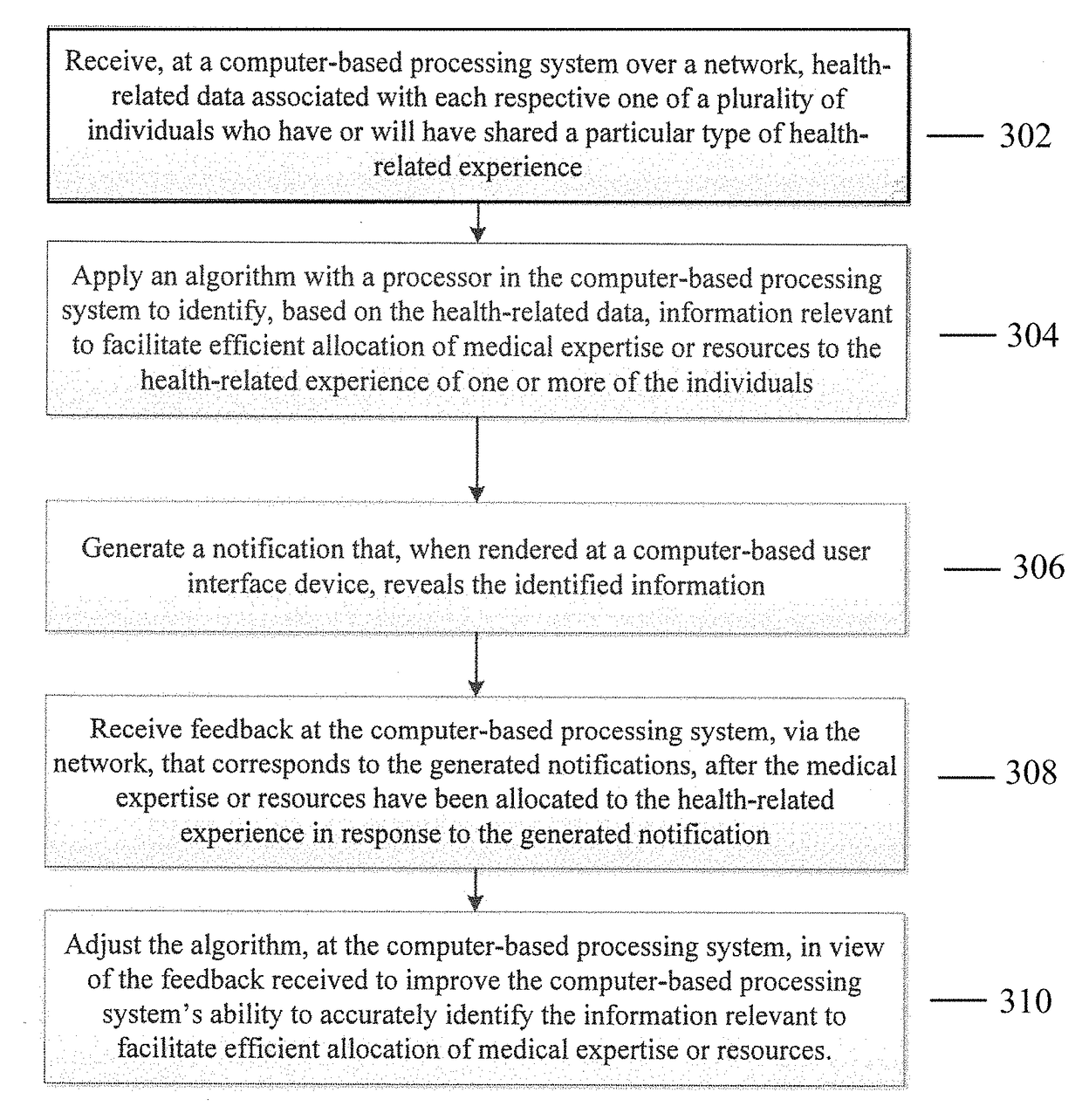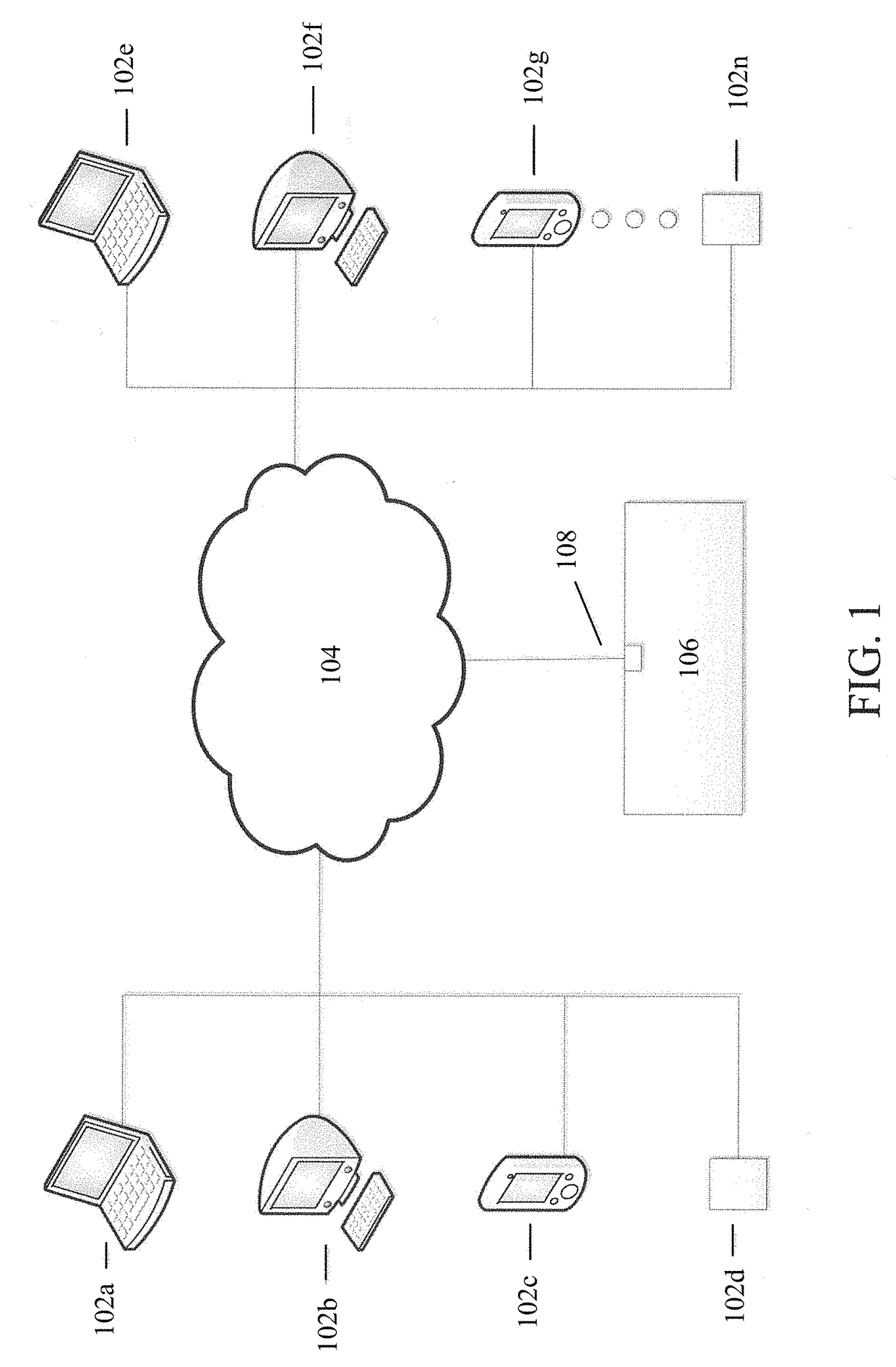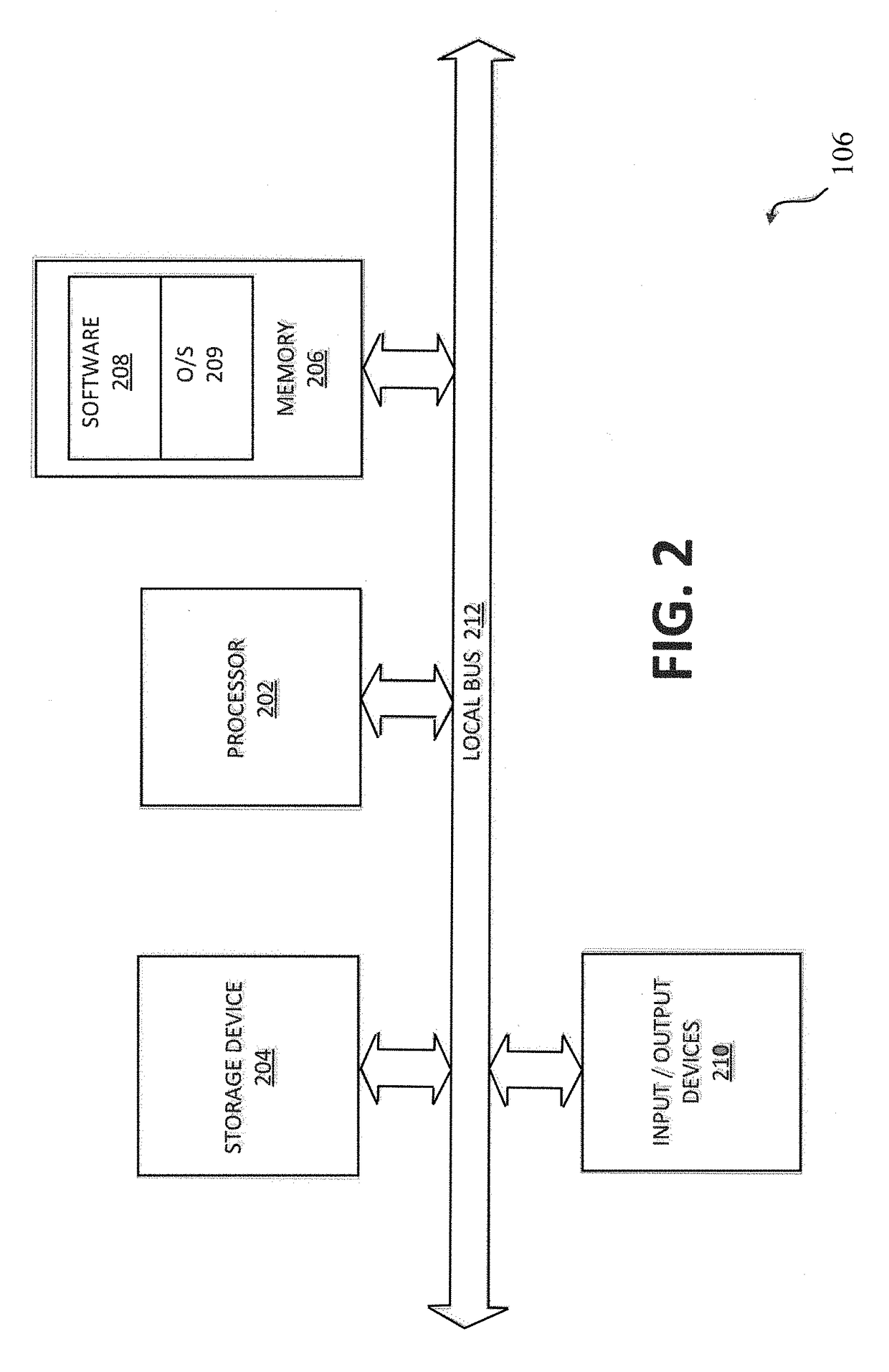Artificial intelligence system for use in conducting clinical trials
a clinical trial and artificial intelligence technology, applied in the field of clinical trial participation of patients using artificial intelligence, can solve the problems of extremely scarce financial resources and medical expertise needed to provide medical care and conduct medical research, and achieve the effect of accurately identifying information relevant, facilitating efficient allocation of medical expertise or resources, and improving the computer-based processing system
- Summary
- Abstract
- Description
- Claims
- Application Information
AI Technical Summary
Benefits of technology
Problems solved by technology
Method used
Image
Examples
case 1
al Trial
[0075]A company is engaged in a clinical trial to assess the effect of a new Alzheimer's drug. The company knows that the drug works on only a subset of the population, but they have been unable to this point to ascertain how to identify patients who respond positively. Nevertheless, in order to recoup the investment on their research, they initiated a large-scale clinical trial. Each trial participant, whether in the placebo or treatment group, began the trial with a genome analysis and blood chemistry test; every month during the trial the blood chemistry test is repeated. Because the company does not know which patients will respond to treatment, or even what fraction, they are concerned that the trial might not be large enough to show statistical significance. If they need to wait until the end of the trial only to learn that it is not working, they would lose their original research investment.
[0076]The company uses the system to monitor all data in the trial. All genet...
case 2
tive Heart Failure Risk Analysis
[0078]Angela is an 82-year old woman with congestive heart failure. Most of the time she is fine, but every once in a while her medications, diet, and exercise are out of balance, and she experiences fluid buildup. This results in difficulty breathing, an ambulance run to the emergency room, and being admitted to the hospital for a few days to re-establish her steady state. Hypothetically, she is one of thousands of patients in a particular health care system (e.g., one that includes multiple hospitals) in the same situation, and these incidents are more frequently being flagged and under-reimbursed by health insurance systems. The health care system would like to find a solution to identify these patients before they have an episode, have them seen in an office visit or even have a visiting nurse see them, and rebalance their diet and medication before there is an event requiring hospitalization.
[0079]The health care system uses the system to monitor...
PUM
 Login to View More
Login to View More Abstract
Description
Claims
Application Information
 Login to View More
Login to View More - R&D
- Intellectual Property
- Life Sciences
- Materials
- Tech Scout
- Unparalleled Data Quality
- Higher Quality Content
- 60% Fewer Hallucinations
Browse by: Latest US Patents, China's latest patents, Technical Efficacy Thesaurus, Application Domain, Technology Topic, Popular Technical Reports.
© 2025 PatSnap. All rights reserved.Legal|Privacy policy|Modern Slavery Act Transparency Statement|Sitemap|About US| Contact US: help@patsnap.com



